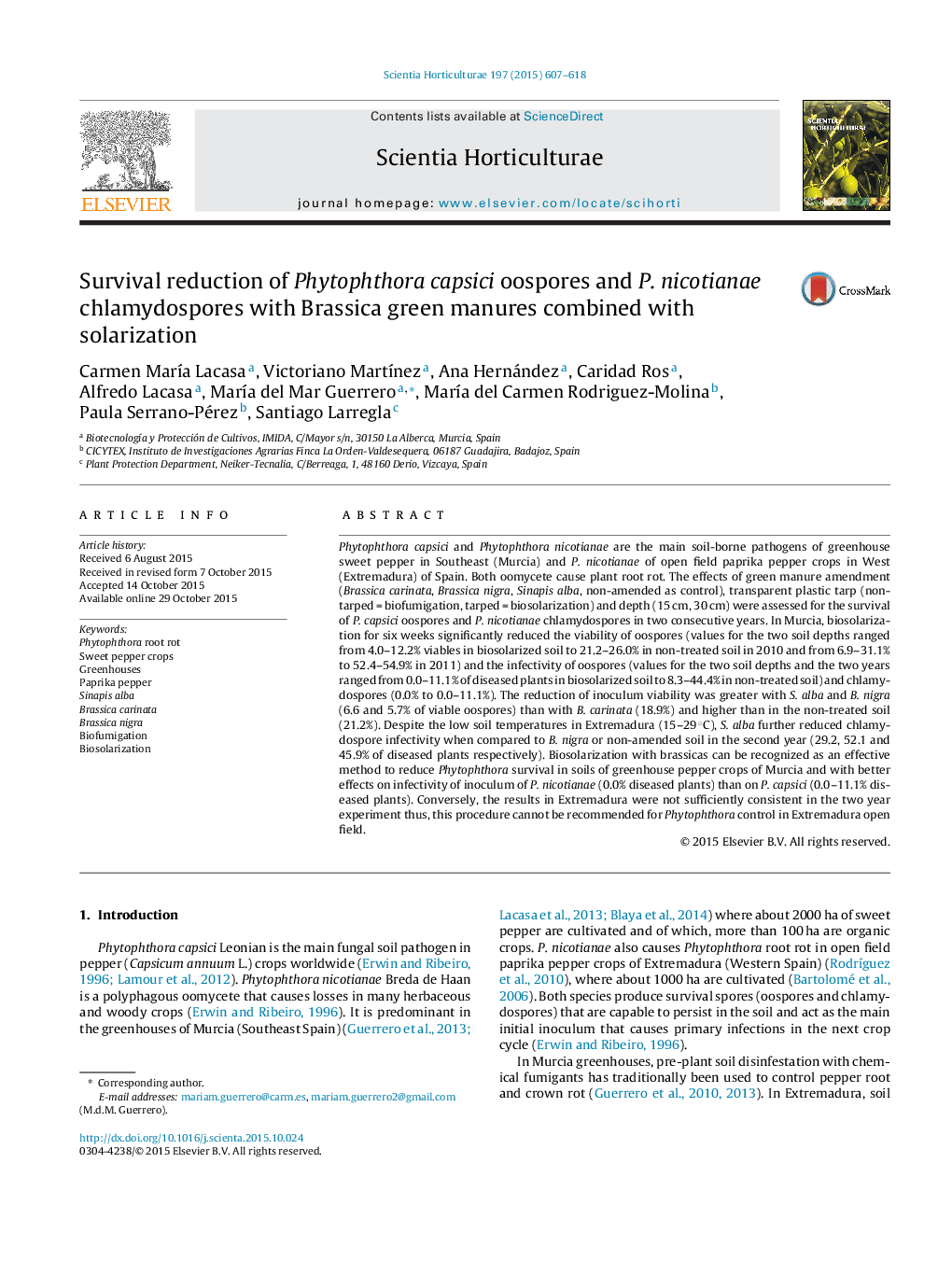| کد مقاله | کد نشریه | سال انتشار | مقاله انگلیسی | نسخه تمام متن |
|---|---|---|---|---|
| 6406904 | 1628801 | 2015 | 12 صفحه PDF | دانلود رایگان |

- Brassica green manures plus soil tarping reduced Phytophthora inoculum survival.
- In tarped soil, survival was lower in amended than in non-amended at the lesser depth.
- Higher reduction was obtained in P. nicotianae infectivity than in P. capsici in Murcia.
- Brassicas plus soil tarping is effective in Murcia but not in Extremadura conditions.
- Phytophthora spores thermal inactivation by soil tarping only in Murcia greenhouse.
Phytophthora capsici and Phytophthora nicotianae are the main soil-borne pathogens of greenhouse sweet pepper in Southeast (Murcia) and P. nicotianae of open field paprika pepper crops in West (Extremadura) of Spain. Both oomycete cause plant root rot. The effects of green manure amendment (Brassica carinata, Brassica nigra, Sinapis alba, non-amended as control), transparent plastic tarp (non-tarped = biofumigation, tarped = biosolarization) and depth (15 cm, 30 cm) were assessed for the survival of P. capsici oospores and P. nicotianae chlamydospores in two consecutive years. In Murcia, biosolarization for six weeks significantly reduced the viability of oospores (values for the two soil depths ranged from 4.0-12.2% viables in biosolarized soil to 21.2-26.0% in non-treated soil in 2010 and from 6.9-31.1% to 52.4-54.9% in 2011) and the infectivity of oospores (values for the two soil depths and the two years ranged from 0.0-11.1% of diseased plants in biosolarized soil to 8.3-44.4% in non-treated soil) and chlamydospores (0.0% to 0.0-11.1%). The reduction of inoculum viability was greater with S. alba and B. nigra (6.6 and 5.7% of viable oospores) than with B. carinata (18.9%) and higher than in the non-treated soil (21.2%). Despite the low soil temperatures in Extremadura (15-29 °C), S. alba further reduced chlamydospore infectivity when compared to B. nigra or non-amended soil in the second year (29.2, 52.1 and 45.9% of diseased plants respectively). Biosolarization with brassicas can be recognized as an effective method to reduce Phytophthora survival in soils of greenhouse pepper crops of Murcia and with better effects on infectivity of inoculum of P. nicotianae (0.0% diseased plants) than on P. capsici (0.0-11.1% diseased plants). Conversely, the results in Extremadura were not sufficiently consistent in the two year experiment thus, this procedure cannot be recommended for Phytophthora control in Extremadura open field.
Journal: Scientia Horticulturae - Volume 197, 14 December 2015, Pages 607-618